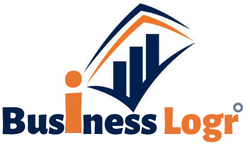
Soap brand Lifebuoy has its core customer base in rural India. The brand is spread across six lakh Indian villages and to tap this market, Lifebuoy started a campaign called ‘The Adaptive Data Lighthouse (ADL)’, a data-led infection alert system.
The aim was to educate people on the importance and benefits of washing their hands.
Mobile was used as the preferred medium to increase the reach as it has a greater penetration at 78 percent in villages, more than even television.
After collecting data from the government’s two largest databases, a proprietary dashboard system was created that sent an alert about the spread of a particular disease. After that outbound calls were made to tell people about the spread of the communicable disease that could be avoided by keeping their hands clean.
The message was communicated only to consumers of sub-districts where disease outbreak went beyond the threshold using Mobile Outbound Dialer. In eight weeks of activity, over 60 million calls in relevant sub-districts across Uttar Pradesh and Bihar were made to ensure consumers take preventive measures against infections.
The campaign not only made an impact by saving one lakh 78 thousand lives, but it also won an award at the coveted Cannes Lions 2019. This and many such campaigns are perfect examples of how marketers are embracing newer technologies for effective communication.
Talking to Moneycontrol, Niraj Ruparel, National Head – Mobile, Mindshare India, said, “These technologies (Artificial Intelligence, Blockchain) allow advertisers to offer new, compelling and engaging media formats to offer personalised experiences to its users that are based on a story-telling format. Studies have shown that users respond better to such branded content.”
For marketers, AI-based chatbots are turning out to the go-to options for effective communication.
Earlier this year, Idea 4G unveiled a distinctive voice-enabled AI-led interactive video chat bot ad campaign that enabled millions of users to interview actor Mallika Dua. The campaign was an attempt to bring alive the experience of video calling with a renowned celebrity in real time.
With the help of AI, the ad creative listened to user questions in English and Hindi and used Machine Learning (ML) to analyse all the questions asked by previous users and increase the accuracy of the responses.
Ruparel pointed out, “AI is offering personalised experiences like video bot or regional language voice bot, it is bringing down the cost of conversation and personalisation which is almost 20 times cheaper than a human telecaller.”
Two years back Godrej Hit ran a campaign to educate people about platelet donation. It also partnered with Apollo Hospitals for last mile connectivity for those who wanted to opt for donations. However, measuring the impact became difficult. And this is where voice and IVR (interactive voice response) came into the picture. As many as nine donors had come forward by the end of the campaign.
According to Ruparel, Machine Learning (ML) has become so strong that from key-pressed IVR it has transitioned to a keyword.
In a campaign for a toothpaste brand, callers who wished to know more about dental issues had to dial up a number and just mention the keyword (toothache) and the information would be processed accordingly.
All these campaigns are a sign that technologies such as AI, NLP (Natural Language Processing), and Machine Learning will become an integral part of the advertising industry in the times to come.
Ruparel believes that going forward there will be a rise in the use of voice assistants.
The use of Blockchain in the ad space is also fast catching up. A pilot project which was run for PepsiCo on Zilliqa’s blockchain, a high-throughput public blockchain platform, saw 28 percent increased efficiency in terms of costs for viewable impressions, in running the campaign through smart contracts.
Mahendra Upadhyay, Head of Data and Technology, Mindshare India, believes that “Blockchain technology brings transparency and helps a lot in an ecosystem where multiple parties are involved because it can speed up things and it also reduces technology cost.”
While marketers are putting to use these technologies time and again, what is the pace of adoption of them in India?
Ruparel believes that “early signs are promising and all the stakeholders in the ecosystem have to come together and accelerate this wave.”
He further said, “advertisers are investing in internal readiness in terms of IT, processes and skill sets to be able to adopt the new technologies and drive business impact.”
[“source=moneycontrol”]




